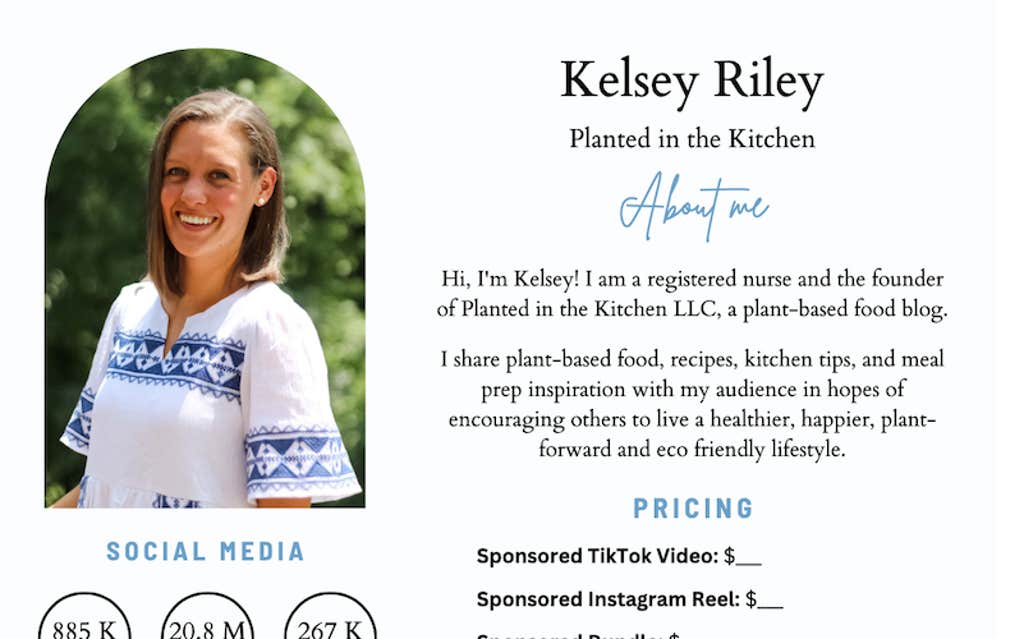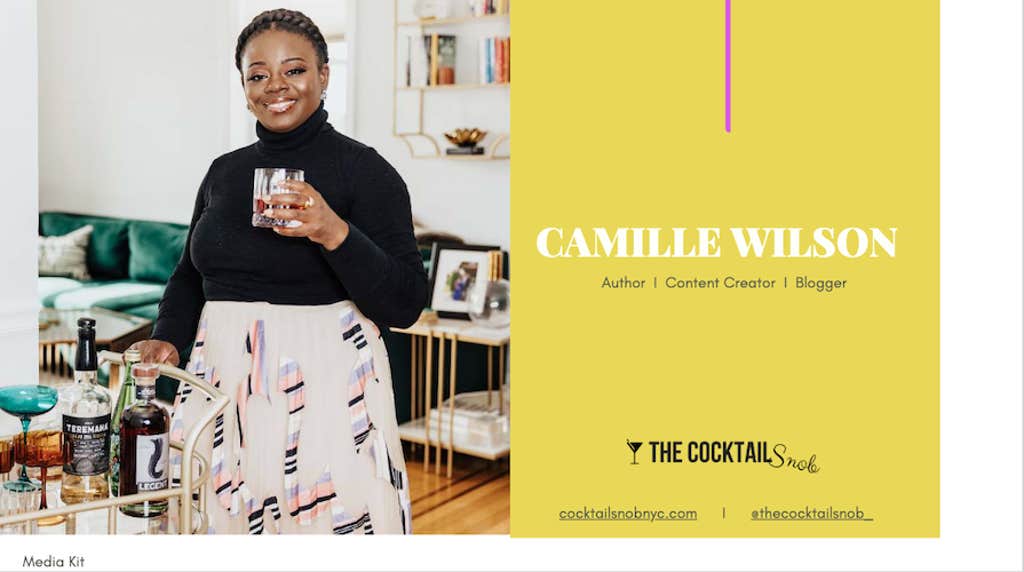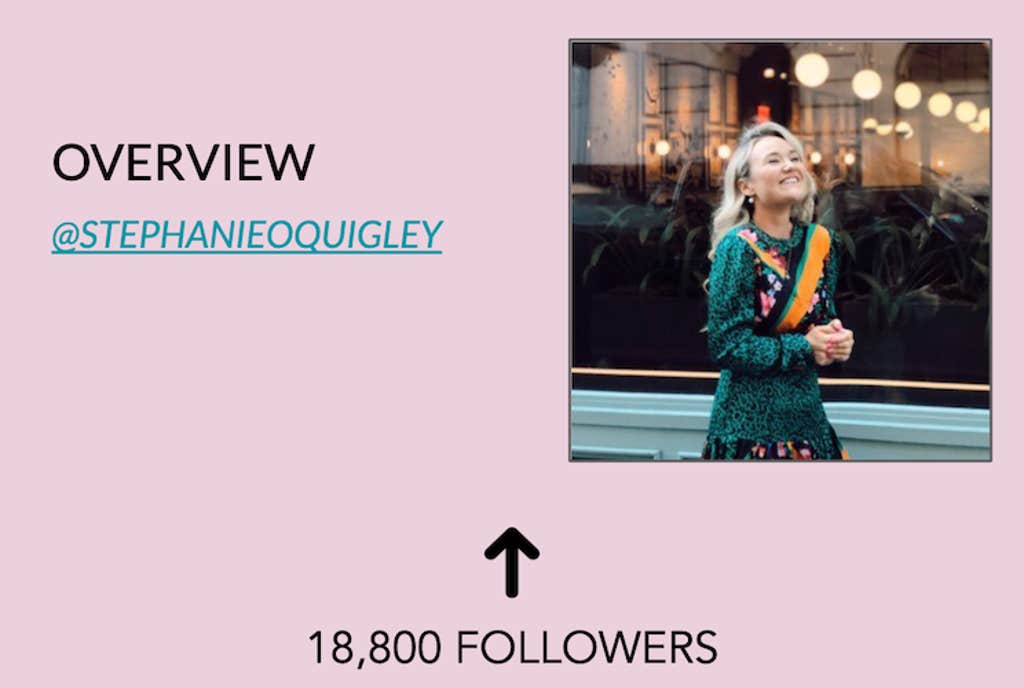
When you’re ready to start looking for brand deals, it’s essential to have an influencer media kit. Brands can eyeball your social media channels to get a first impression of your content. However, what’s inside your media kit could determine whether or not they want to partner with you.
When building an influencer media kit, your goal is to showcase key metrics and ensure you stand out. Your media kit is an extension of yourself and your brand, giving potential partners a deeper understanding of who you are.
What is an Influencer Media Kit?

An influencer media kit is a document content creators create that includes information on their brand and history. You’ll want to include a background bio, social media metrics, audience demographics, past brand partnerships, and more. This is your chance to show potential partners the magic that makes your brand stand out.
When communicating with brands about partnerships, an influencer media kit comes in handy to quickly provide an overview of your following. Think of it as a mini presentation that gets to the heart of why you matter.
Making an influencer media kit doesn’t require any money. You can start creating one by using a free template on Canva to fit your brand’s look and feel. What matters most is the story you’re telling.
One of the best ways to learn what makes a great influencer media kit is by looking at other brands’ presentations. Before you start building your influencer media kit, here are tips from five influencers who used theirs to land brand deals.
1) Put your personality into your media kit

Alyce Chan is a standup comedian and mom influencer who has worked with brands like Disney and See’s Candies. Chan told Passionfruit that brands want to know they are dealing with a human being with a personality. Not only does her media kit include her headshot and brand colors, but it’s infused with personal details and her comedic voice.
“I made sure to use language inside of my media kit that’s consistent with my comedy,” Chan said. “Quirky and fun. My comedy is non-stop online and offline and I think that provides brands reassurance that my approach is natural and not mainstream.”
She also believes it’s important to highlight the differences that set you apart so brands can see your uniqueness. For example, in Chan’s media kit, she tells brands she’s a first-generation Asian mom who is also a stand-up comedian.
“Be transparent and be proud of all your unique traits and really dig deep to list out the differences that set you apart from others,” she said.
2) Keep it short and simple

Influencer media kits can be as many pages as you want them to be. However, Kelsey Riley, a vegan food influencer who has worked with brands like Target and Walmart, recommends keeping it short.
Riley told Passionfruit she used her influencer media kit to give brands a clear picture of who she is and what she represents. To do this, she made sure her information fit on one page.
“My media kit covers a lot of topics,” she said. “But it just fits on one page.”
She believes this approach shows a sample of her work in a concise way. On just one page, she is able to show an overview of her social media statistics (followers and impressions), pricing, and a list of other brands she’s worked with.
3) Stats, stats, stats

Many influencers view their media kit as a chance for brands to learn their story. Camille Wilson, a cocktail influencer who works with brands like Grey Goose, thinks influencers need to remember their media kit is an opportunity to make a first impression on a brand.
That’s why Wilson recommends influencers showcase their metrics prominently in their kit.
“If you have a high engagement rate, make sure you include it,” Wilson told Passion Fruit. “If you’ve grown your audience quickly, highlight that. Don’t feel like you have to limit yourself to just social media-related stats. If you have a large email list or high number of visits to your website, make sure that’s there too.”
One thing Wilson doesn’t recommend putting in your influencer media kit is your prices or rates. This allows you to customize your rates for a brand after they show interest in working with you.
4) Showcase previous successes with brand partnerships

Stephanie O’Quigley is a podcast host who has worked with brands like FabFitFun and Madison Reed despite having under 20,000 followers. She told Passionfruit that her media kit helped her land those partnerships. Her kit focused on the success of previous brand partnerships and metrics from past campaigns.
“Give examples of brands you’ve worked with in the past. It communicates legitimacy and credibility and communicates that you’re delivering on a campaign from start to finish,” she added.
She also shared that she stresses to brands that even though she has a small, engaged audience, she only works with brands that align with her followers.
“The contents of my media kit showcase how engaged my community truly is, albeit a small one,” she said.
5) Let future partners know your following expands beyond social media

While incorporating metrics about your social channels is essential, Cynthia Johnson says your kit needs to show your expertise. The entrepreneur and podcast host has worked with brands like Ally Bank and PayPal and says to make sure you show, not just tell, brands more about who you are.
To do this, she believes in showing a holistic view of who you are as a creator.
“Brands want to see your content and that you are engaged actively in the industry you influence,” she told Passionfruit. “I show pictures on stages I’ve spoken on, with other influencers, and big wins that stand out—like press.”
By showing your involvement in your community, you give authenticity to your brand. Anyone can build a following. But displaying authority in your industry shows potential partners that you’re more than just charming.




